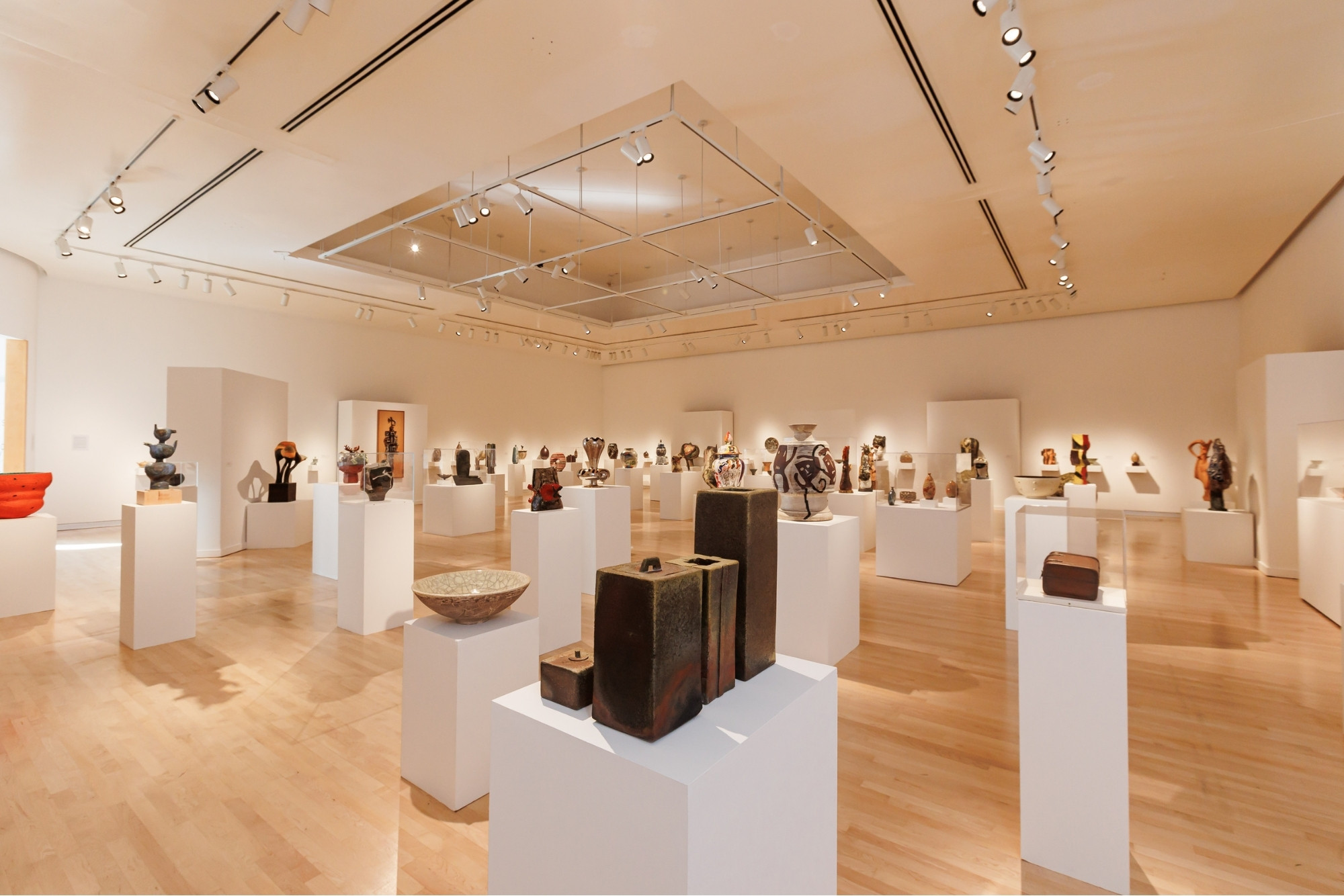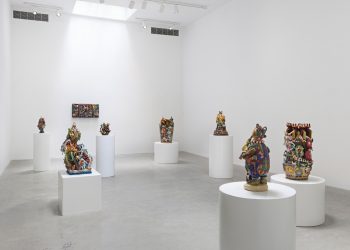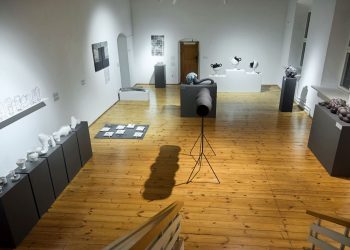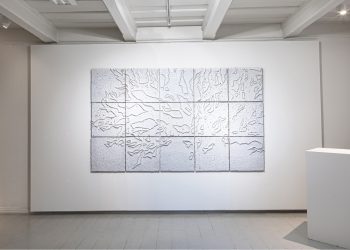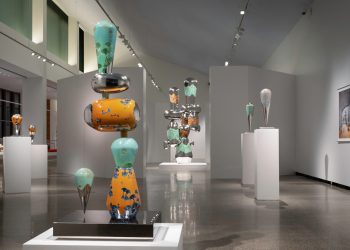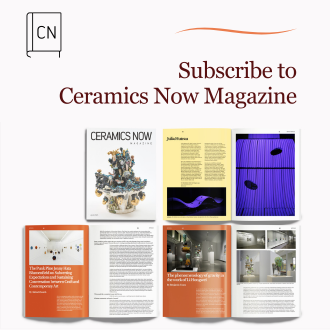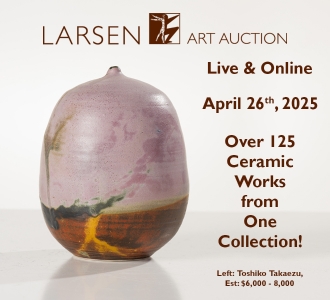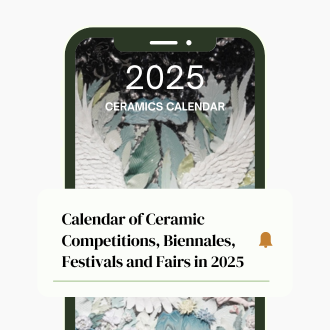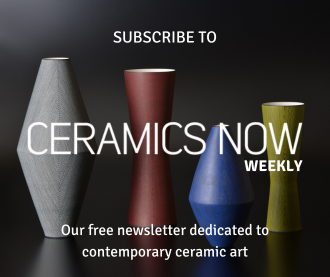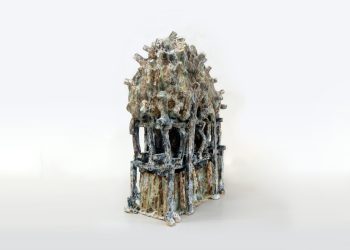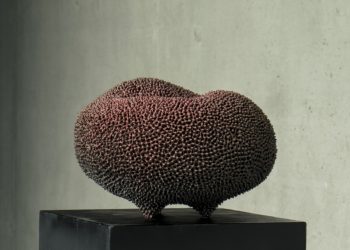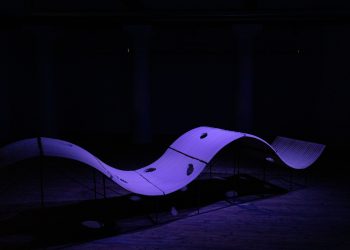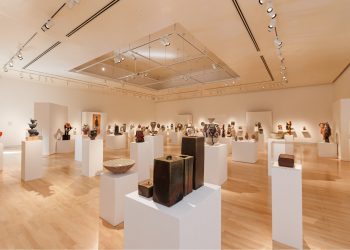By Nancy M. Servis
“The point of art is not to make maps but to adventure.”1
Jim Ede
The nature of collecting can be described as an impulsive urge, a planned strategy, or a cultural wayfinding. Whether by museums or individuals, collecting objects has been practiced intentionally or informally for millennia. The cabinet of curiosities developed in fifteenth-century Europe held oddities from around the world, signifying the private collector’s prestige. Solely possessing objects is one collecting motivation. But for others, there is something more.
Jim Ede was a mid-twentieth-century impassioned collector living in Cambridge, England. Over sixteen years, he created an inspiring venue for contemporary art known as Kettle’s Yard. It was his home with his wife, Helen, from 1957 to 1973, which evolved into their art-filled dwelling and gallery space. Various objects reflecting Ede’s love of nature and art were thoughtfully arranged in a livable manner, not valorized in a sanctified space.2 Ede welcomed visitors weekly, especially students, to discuss the pieces on view and wander the four interconnected cottages and second-story expansion. Though professionally experienced with the conventions of museums, Ede envisioned a quiet realm “where young people could be at home unhampered by the greater austerity of the museum or public art gallery.”3 Interspersed paintings, sculptures, period furniture, and ceramics in Ede’s former home, now under the auspices of Cambridge University, offer a refreshing sense of discovery. At Kettle’s Yard, art is not a status symbol or a financial investment but rather a haven for personal connection to artists and their shared stories, evoking a specific time and place.
Like Ede’s Kettle’s Yard, Fred Marer’s and Forrest L. Merrill’s ceramic collections capture their moment in time and place and illustrate their personal approach to collecting. Both men bought work directly from artists, local galleries, and exhibitions and were frequently at kiln openings to select choice work. Their first purchases as budding collectors served as an introduction to the medium from which their fine collections developed. Their holdings represent a groundbreaking era of ceramic development in both Northern and Southern California. As eyewitnesses and active participants, Marer and Merrill are defining collectors who recognized the transformational time when clay use on the West Coast radically changed. California’s ceramic history offers an exceptional opportunity to appreciate the artistic diversity and vision of ceramic makers. The accomplishments of regional and international practitioners in the Marer and Merrill collections illustrate with distinction the artistic clay use in California and beyond.
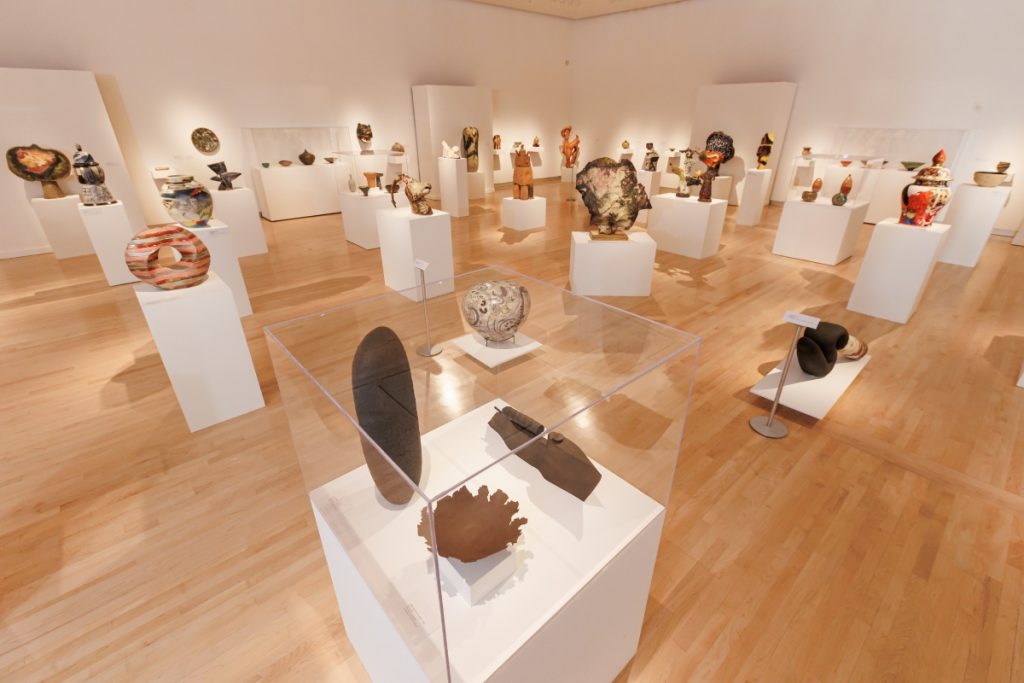
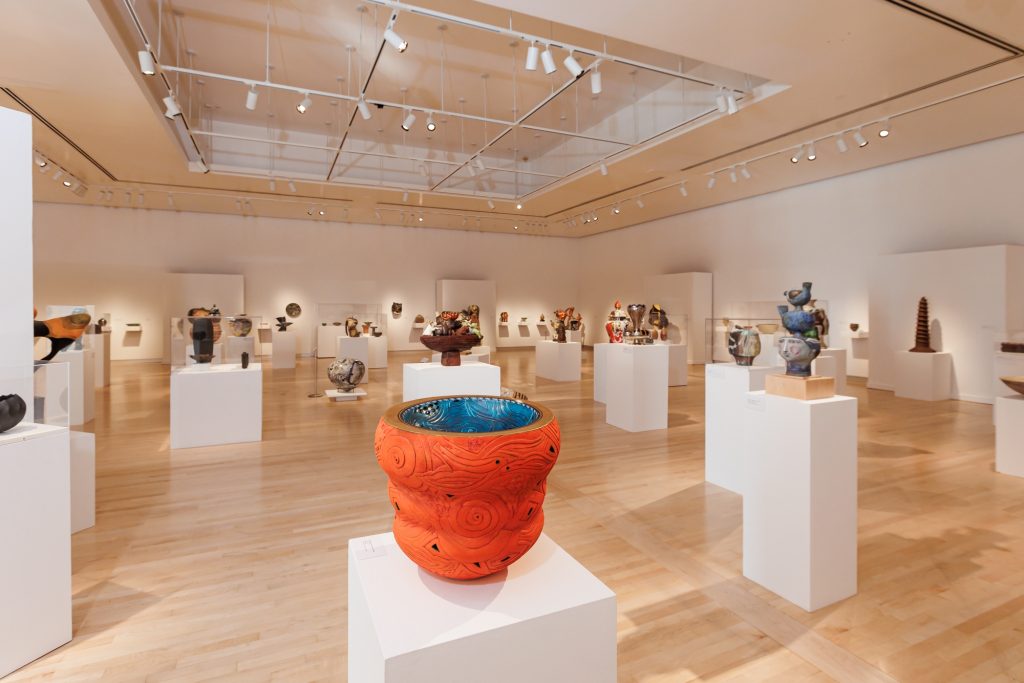
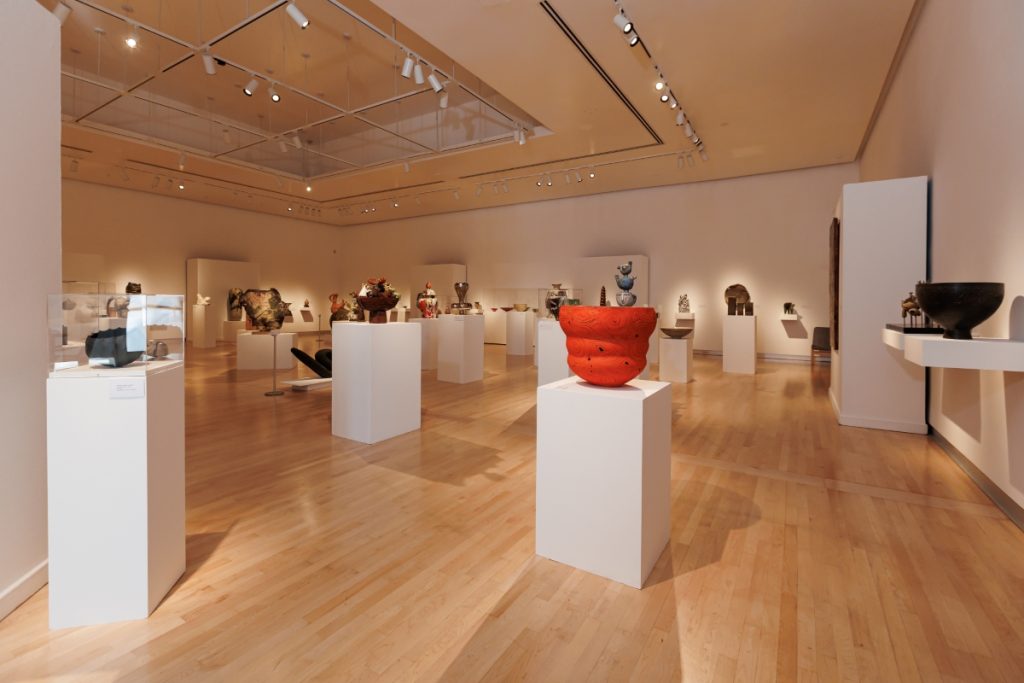
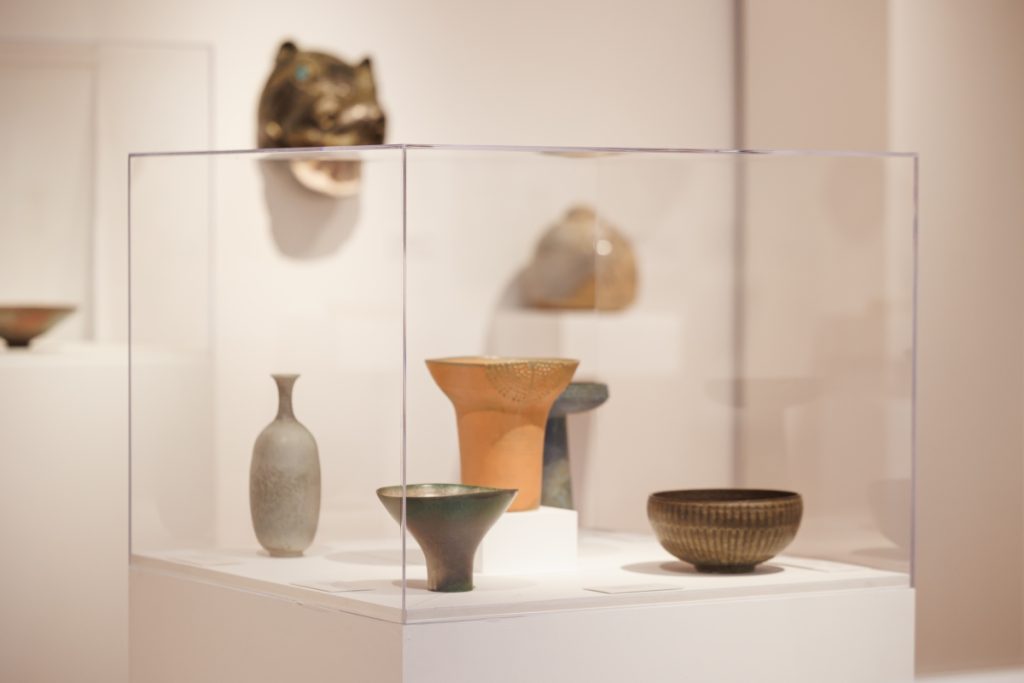
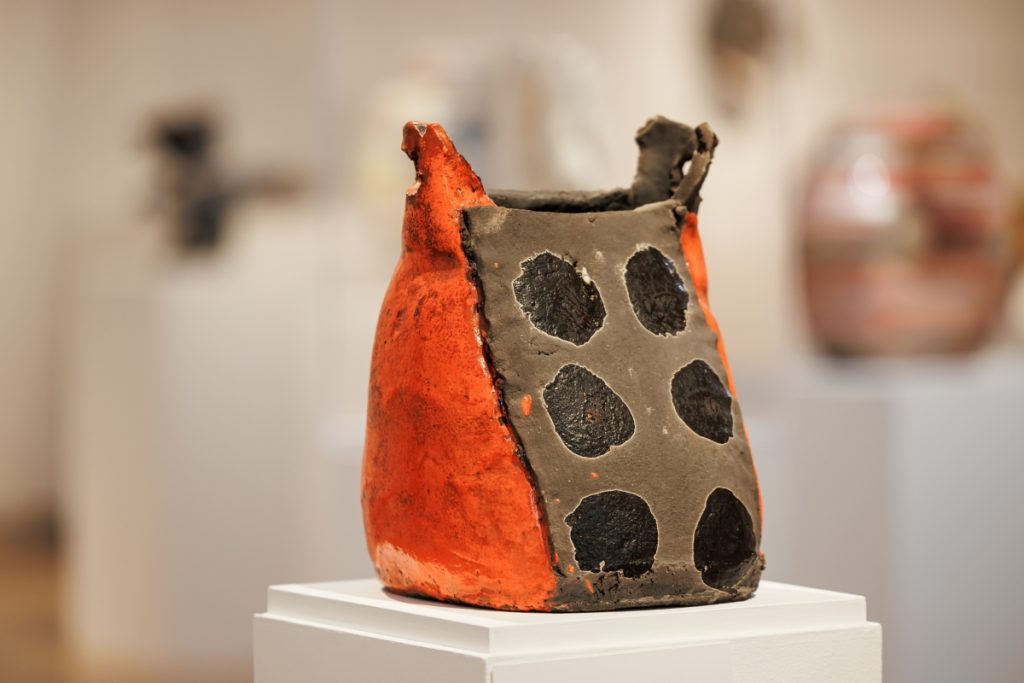
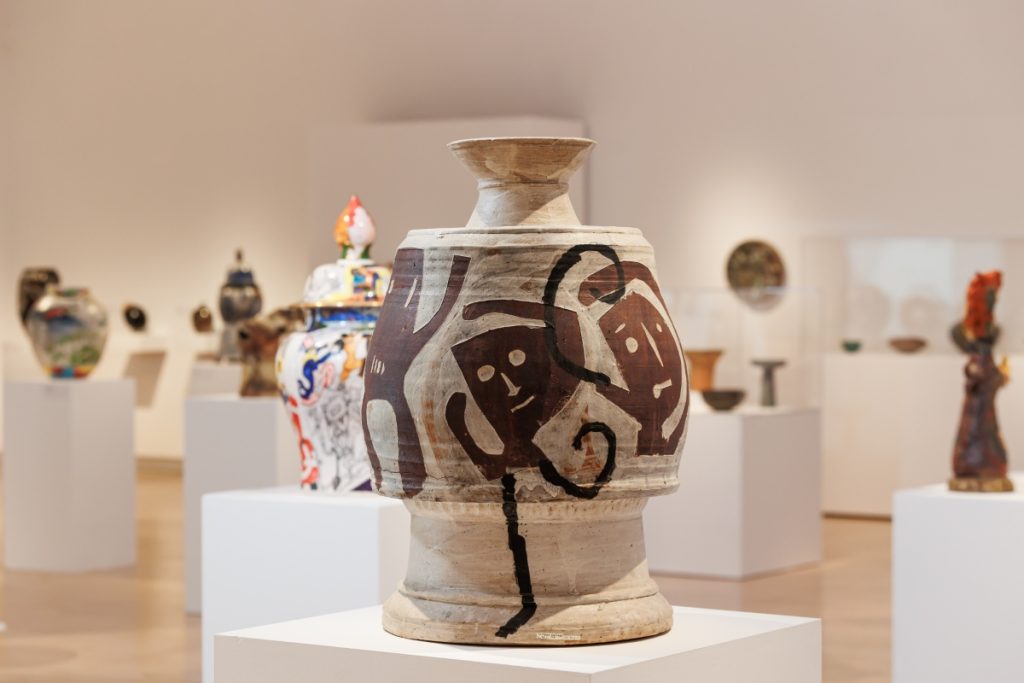
Cultivating Clay at Scripps College
“The historic Scripps Annual…has provided yearly pathways to advance an engaging discourse in the ceramic arts.”4
Peter Held
The Scripps College Ceramic Annual is the oldest continuously running exhibition of contemporary ceramics in the United States. It has a respected exhibition history dedicated to exploring, documenting, and celebrating the ceramic arts. From its initial show in 1945 to today, the ceramic annual has featured potters, sculptors, and installation artists dynamically engaging the material, often driving it to new heights of expression.
William Manker established Scripps’ ceramics department in 1935, teaching both at Scripps and at Claremont University College (now Claremont Graduate University)5. Manker also organized exhibitions of ceramics at Scripps’ Lang Art Gallery that developed into the ceramic annual. Richard B. Petterson followed Manker as the college’s ceramic instructor in 1947. Petterson’s ceramic innovations and contemporary programming influenced young ceramic students such as Harrison McIntosh and Rupert Deese. Internationally recognized potters Bernard Leach from England and Shōji Hamada from Japan came to Scripps to give lectures and throwing demonstrations during their popular tours of the United States. Antonio Prieto and Marguerite Wildenhain, revered ceramic artists from Northern California, also visited the school.6 Petterson continued the ceramic annual through 1958, when Paul Soldner assumed curation. Joining the Scripps faculty in 1956, Soldner was on the cutting edge of ceramic practice in the United States with his adaptation of the raku firing process, and he infused the ceramic annual with exciting work by his contemporaries. Soldner’s curatorial tenure ended in 1991 after his retirement in 1990. For the next three years, Nobohu Nagasawa oversaw the exhibition, drawing on the concept of installation art.
Since then, the era of guest curators has sustained the ceramic annual for nearly thirty years, beginning in 1996. Contemporary artists have organized exciting shows featuring inquisitive works by artists from across the nation, and historians and curators have provided insightful perspectives through their selections. As a result, the Scripps College Ceramic Annual continually has served as both a provocation and a beacon to artists, scholars, collectors, and students in the ceramics sphere. Its extensive influence for eighty years is unique to art and exhibitions, fostering new and daring clay use statewide, with a broadening influence beyond geographic boundaries.
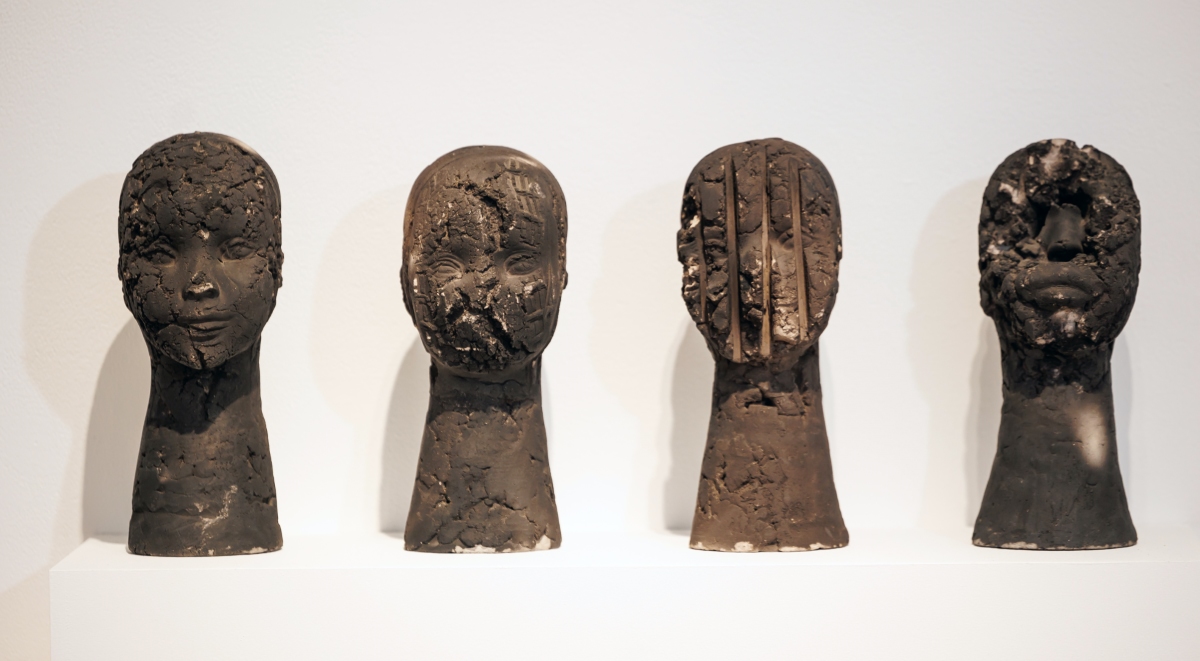
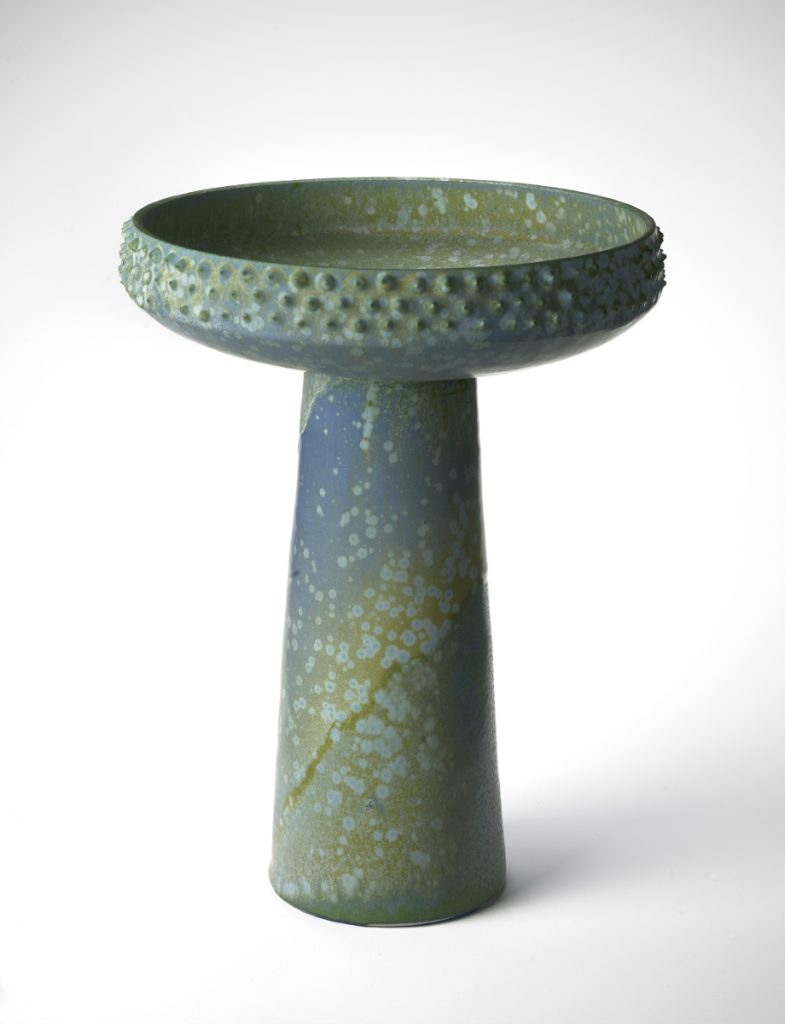
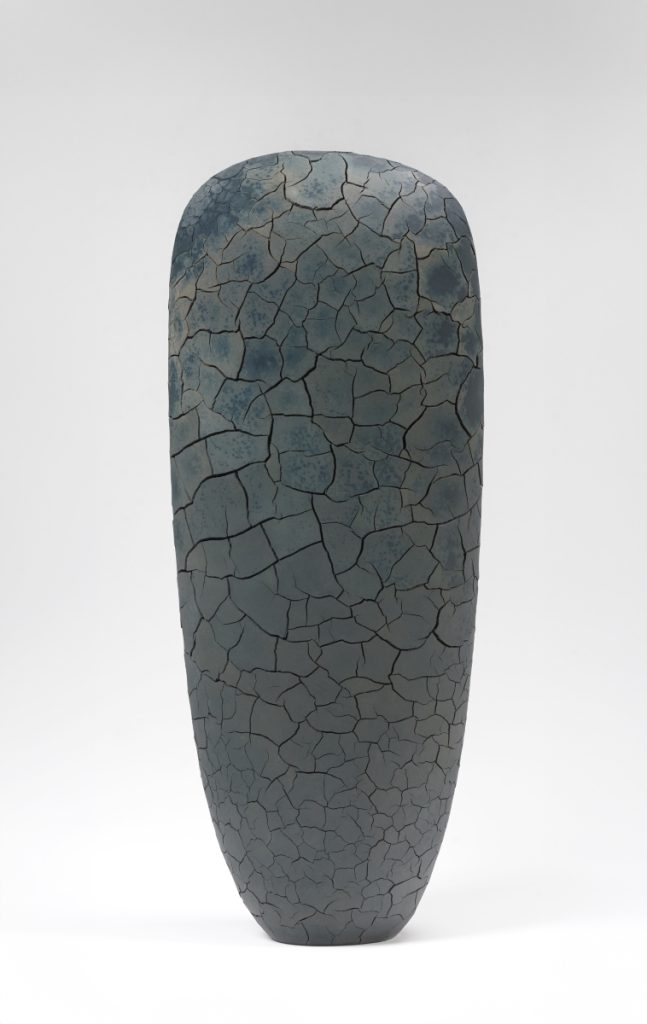
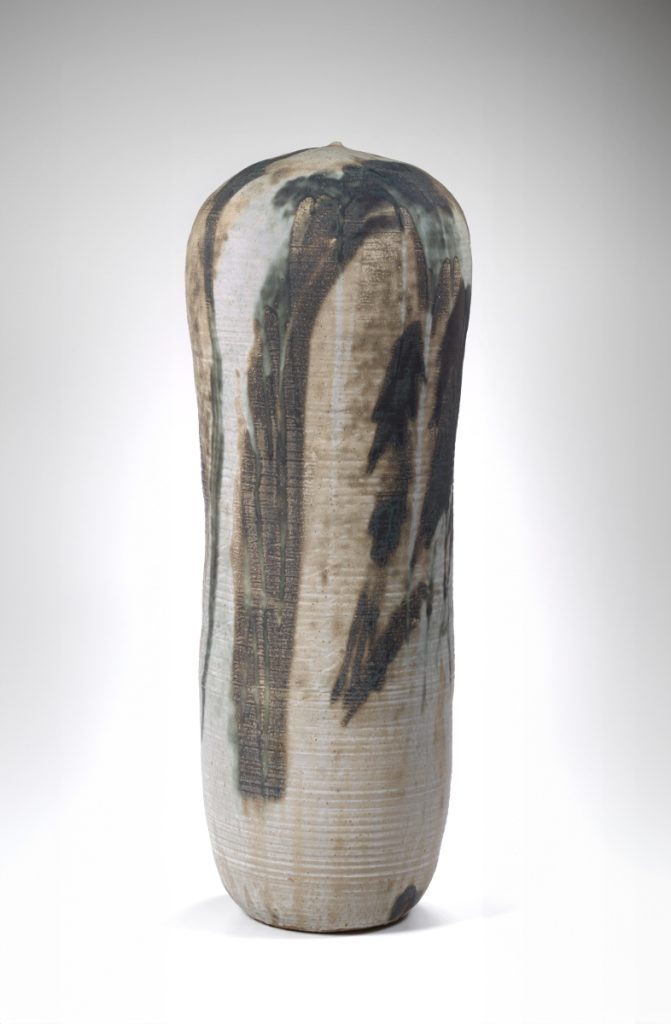
Recognizing the Moment
“I bought what I liked, practically always from people I liked.”7
Fred Marer
The heart of Scripps College’s ceramics collection, the Marer Collection of Contemporary Ceramics is rich in work made by the Otis group.8 It was given to the college over many years due to Marer’s friendship with Soldner. During the early 1950s, not long after Marer began acquiring works, Soldner started teaching ceramics at Scripps, where he also curated the ceramic annual for nearly forty years. Their paths seemed fortuitously intertwined as their friendship assisted Marer’s donations to the college. As Soldner recalled, “Fred Marer is…another perfect example of one who approaches collecting from the best reason, out of curiosity and love of it. He never thought about selling it or making a living from it.”9 At the time of Marer’s death in 2002, he and his wife, Estelle, had gifted more than 950 pieces to Scripps, including vessels, sculptures, tiles, and experimentations in clay. His stated motivation was straightforward: “We felt it should go to a friendly place. We like the people there…. We thought it would get lost in a big city.”10 He chose to provide an accessible context for students and the community rather than lose sight of his ceramics in the depths of a museum. As a mathematics professor at Los Angeles City College, Marer was an inquisitive collector whose selections were guided by affordability, insight, and friendship, regularly visiting regional colleges like Otis College of Art and Design nearly every week to see artists’ latest work.
Marer’s first purchase was a teapot by Laura Andreson, one of the country’s leading potters of the day.11 Trained as an educator, she established the ceramics program at the University of California, Los Angeles, and was introduced to Marer by Pauline Blank, who also taught at Los Angeles City College. This first purchase of a functional vessel served as a gateway for Marer, whose collection grew to include the work of many artists who shifted the direction of clay from the vessel to interpreted sculpture. Anecdotes surround the origins of Marer’s collection, such as Marer’s introduction to Peter Voulkos. Marer was intent on buying a specific work he had seen at an exhibit, but it had disappeared. As John Mason recalled, “Fred Marer wandered down one day and talked to Pete. Apparently, they had some conversation by telephone. Fred had seen a piece of Pete’s in a display cabinet and wanted to know if he could buy it. Pete said, sure, come on down…. [H]e was a man that was curious about the world, and he did collect some art. By the time he got down to purchase the piece, it had been stolen. So Pete says, that’s all right. You can get something else.”12
Marer amassed significant holdings by artists exploring expressionist ceramics, including Michael Frimkess, John Mason, Mac McClain, Ken Price, Jerry Rothman, Henry Takemoto, Soldner, and Voulkos. The groundbreaking 1966 exhibition Abstract Expressionist Ceramics at the University of California, Irvine, featured ten pieces from his collection.13 While Marer embraced the expressionist tenets of the Otis group, he did not abandon the vessel idiom during his collecting years, exemplified by his acquisition of fine bowls by several makers from England, the Eastern United States, and Mata Ortiz in Chihuahua, Mexico. Collecting vessels from established traditions in parallel with innovative work shows Marer’s open-mindedness. His appreciation for the pioneers of modern studio ceramics along with the vanguards of clay conveys the excitement of late-twentieth-century artistic developments in Southern California.
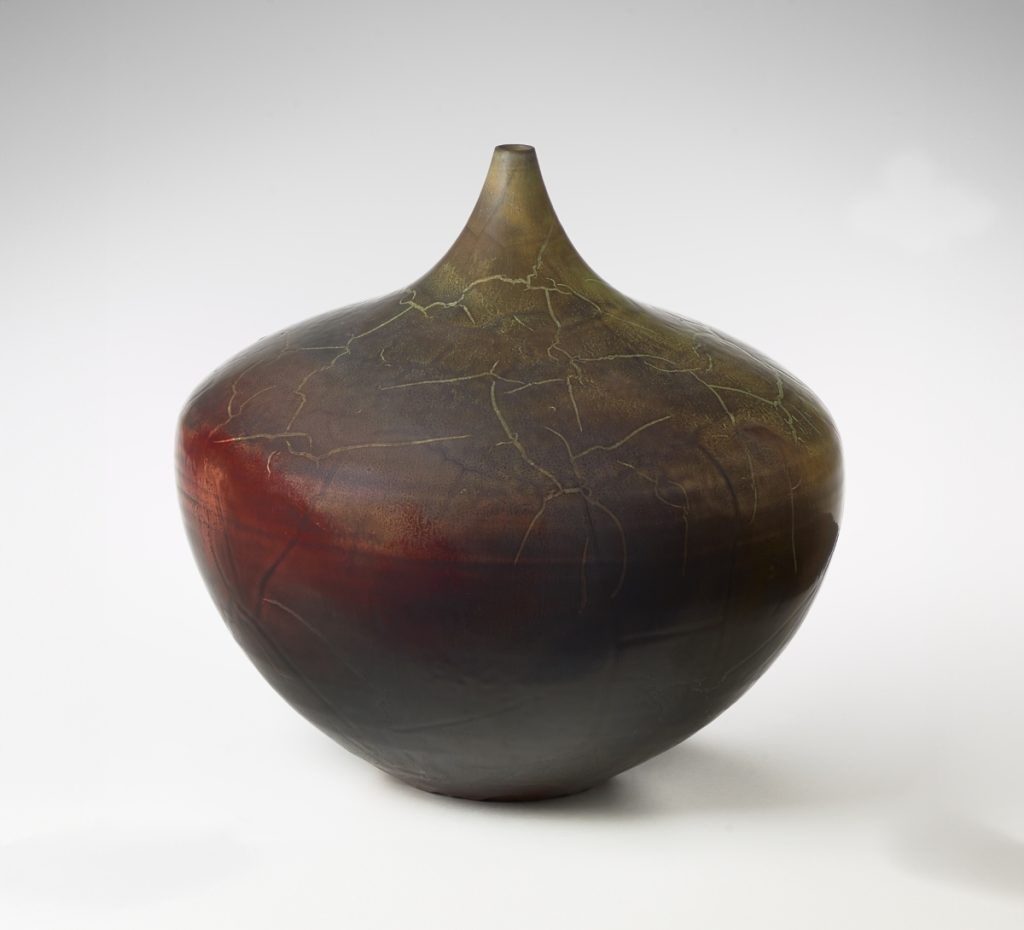
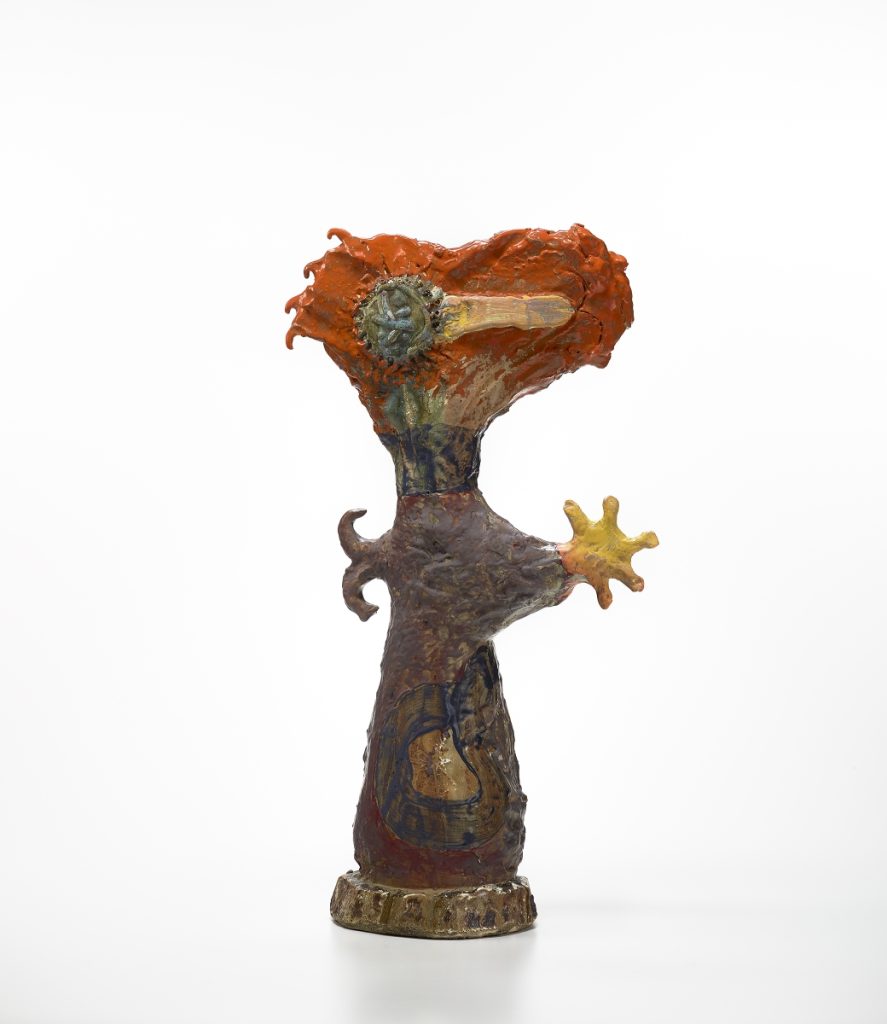
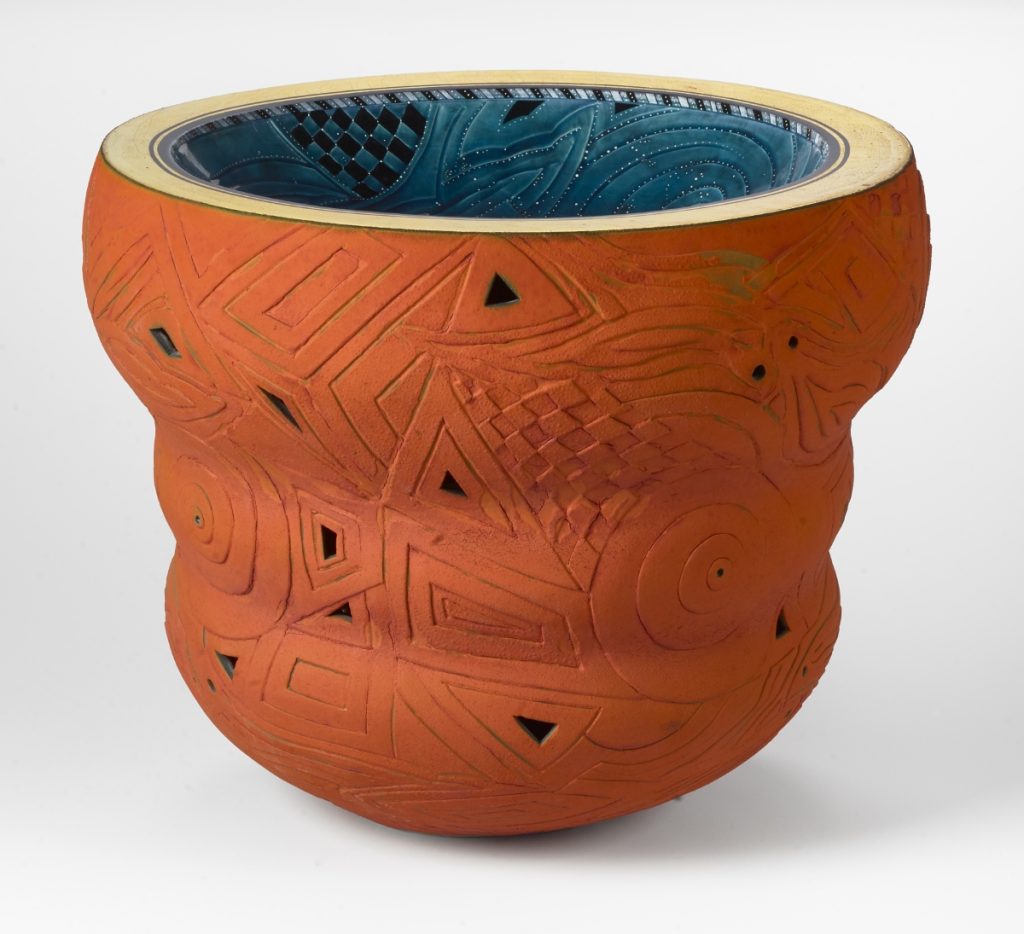
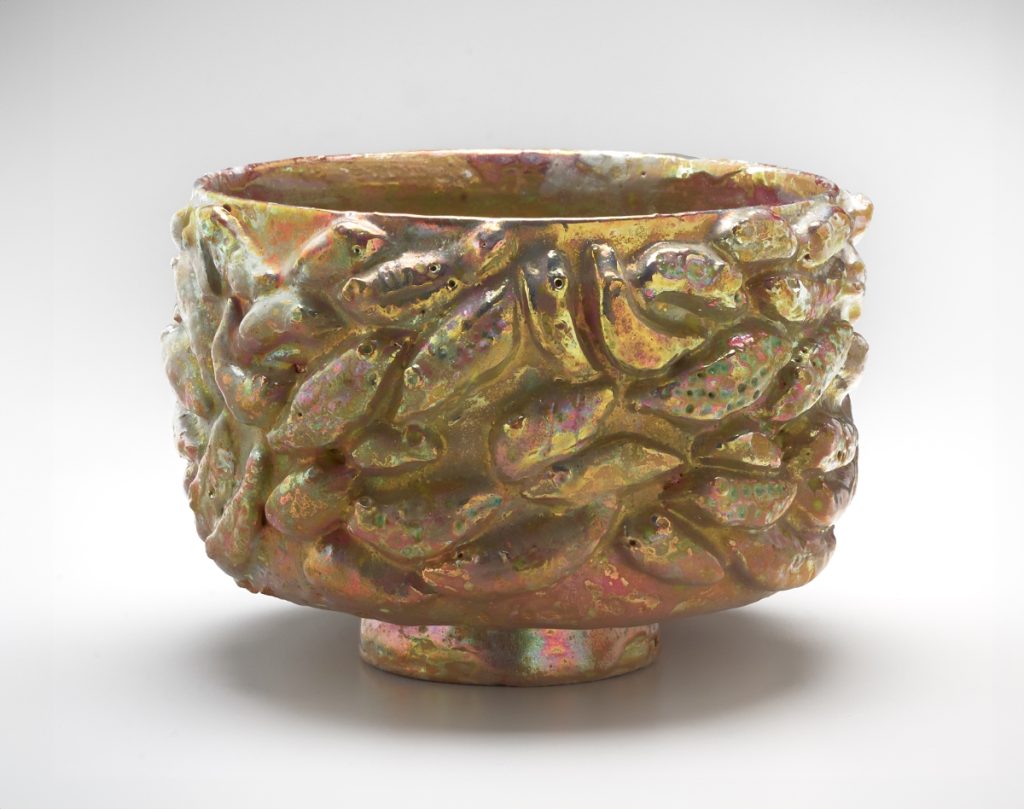
As Marer’s aesthetic interests grew, so did his collecting scope. Several contemporary Japanese artists are represented due to his friendship with Jun Kaneko. Kaneko arrived in California from Japan in 1963 to study painting at the Chouinard Art Institute in Los Angeles (now known as the California Institute of the Arts). One of his first introductions was to Marer and Marer’s first wife, Mary, who died in 1976, and their extensive ceramic collection. “[T]hey had amazing amounts of contemporary ceramics,” Kaneko recalled. “[H]e wasn’t a rich man, but he liked ceramics, so he became very good friends with all ceramic artists…. Because he used to go to studio and help them to load the kilns…. It’s not like a regular collector. So he had much more personal contact with the artists.”14 In 1970, Kaneko curated the show 6 Young Japanese Artists for the ceramics annual, which traveled for three years throughout the West.
Marer’s timing, knowledge, instinct, and collecting strategy emphasizing affordability rendered a personal view of the ceramic art of Southern California. He purchased pieces during pivotal moments of artistic creativity and ceramic experimentation. As a result, an artistic lineage now exists at Scripps College that illustrates a transformational time in ceramics. “I filled our apartment with ceramics until it became an obstacle course,” he wrote, “and then the garage until, even after Jun Kaneko built shelving, it could hold no more. And now they are filling up Scripps, for no longer is ceramic art dominated by so few. It is alive and well throughout the land.”15
Ceramic Encounters
“When you take the time to focus on an artist’s work, you have the liberty to go where they’ve been…. And that’s the kind of journey that interests me very much.”16
Forrest L. Merrill
Forrest L. Merrill has been actively acquiring art objects for most of his adult life. Today, he is recognized as one of the foremost collectors of contemporary crafts in the United States. Organized around the vessel, his extensive ceramic holdings include prime examples by accomplished artists as well as by underrecognized makers with select international representation. He savors unexpected pieces outside the realm of an artist’s iconic style, which acknowledges his deep commitment to the nuance and totality of an artist’s work. Berkeley, California, artist Mark Goudy recently explained, “When Forrest comes by to see recent work, I always have a few things out to show him. But instead, he’s always looking at the odd item at the back of the shelf. ‘What’s the story of this piece over here?’ he would ask.”17
Merrill also has distinguished himself as a thoughtful and generous collector, loaning many works to over 175 exhibitions throughout the United States, including the Renwick Gallery of the Smithsonian American Art Museum in Washington, D.C. in 1973, the Mingei International Museum in San Diego in 1982, and the SFO Museum in San Francisco, where he has had several collaborations. SFO Museum Curator of Exhibitions Daniel Calderon writes, “Our introduction to Forrest L. Merrill was through an exhibition on Scandinavian modernism in 2008. Since then, Forrest has become both a partner and friend of SFO Museum, lending to six additional shows. Some of these, including our most recent with Forrest, an exhibition on fiber artist Kay Sekimachi, have been based entirely from his collection. We are so grateful for Forrest’s support over the years.”18
His preference for the vessel form manifested as a young man growing up in Glendale, California, forty miles west of Scripps College. He discovered contemporary ceramics through his high school art teacher, Gladys Merrick, a former student of Glen Lukens. A potter herself, she cultivated Merrill’s sensitivity to form, introducing him to the world of craft during field trips to local galleries and museums. Her inspiration led to his first purchase, while still a high school student in 1950, of a large Lukens slumped glass bowl along with four 10 inch glass plates. “Her class changed my life,” Merrill said, “by showing me the possibilities of what art could do and how it could impact the way you think about the world.”19 This youthful acquisition sparked a collecting mindset that gained momentum while he was in Europe during the mid-1950s. In 1954, he was conscripted into the army, serving in Germany for eighteen months, followed by a six-week excursion to Oxford University, England, and then enrollment at the University of Stockholm, Sweden. A sense of modern Scandinavian design was awakened, inspiring him to collect ceramics from each country he visited. When recalling this history, he delights in having become aware of the mid-20th century design aesthetic in the 1950s and not in the 1980s. Returning to California in 1957, Merrill obtained a MBA from Stanford University and for many years has invested in San Francisco Bay Area real estate.
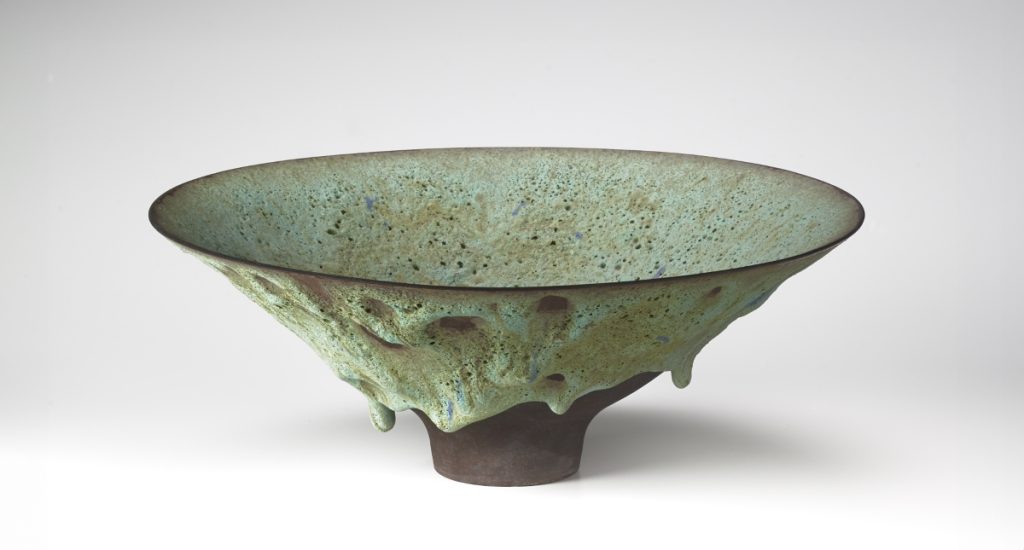
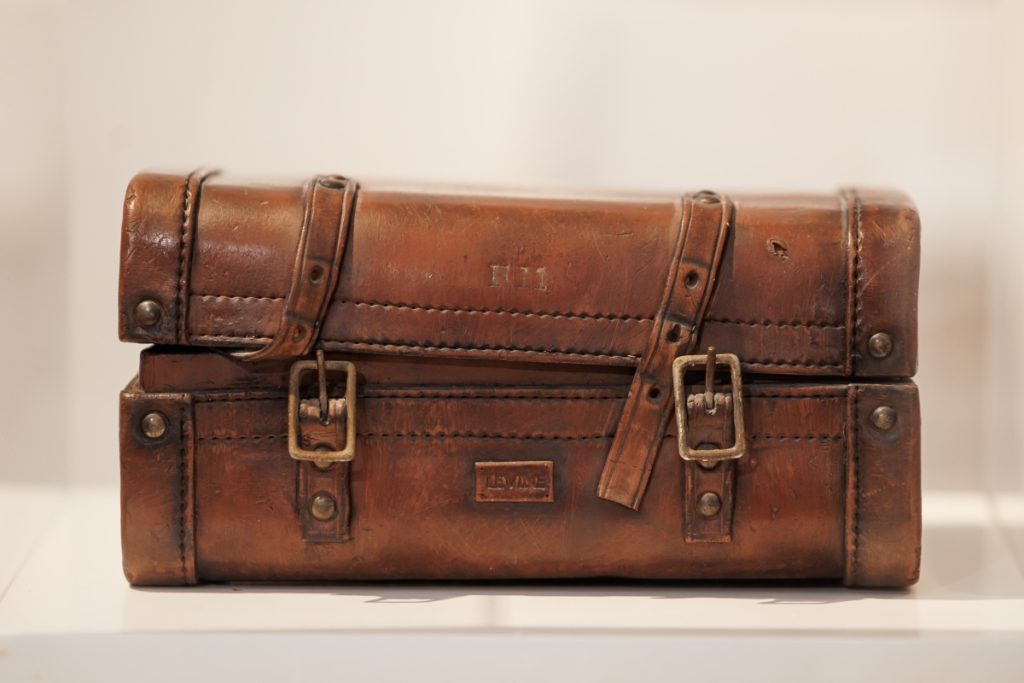
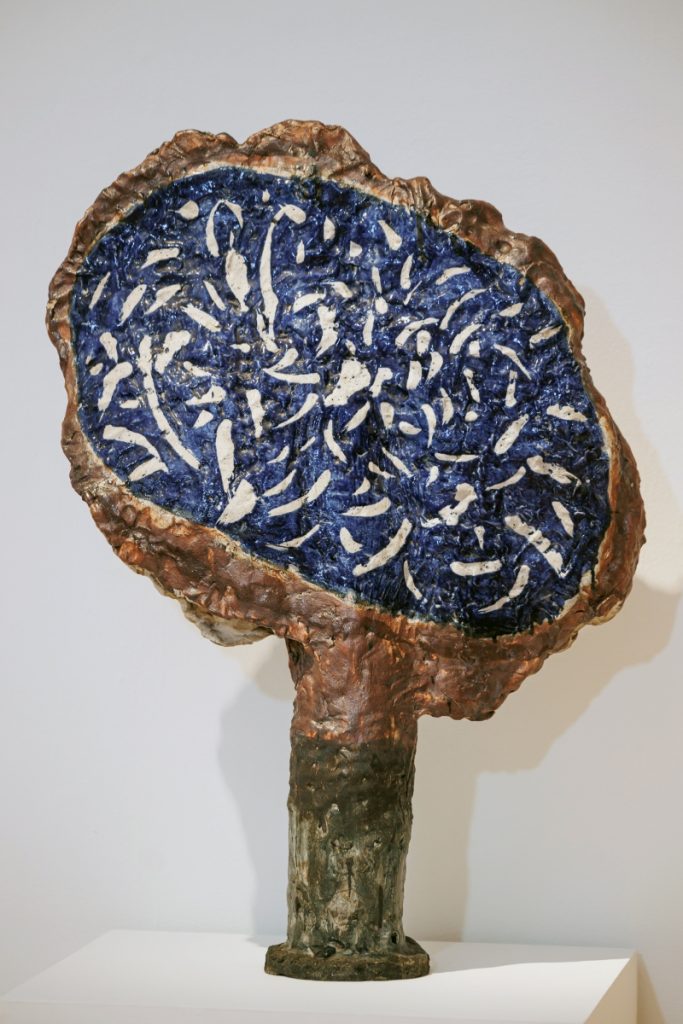
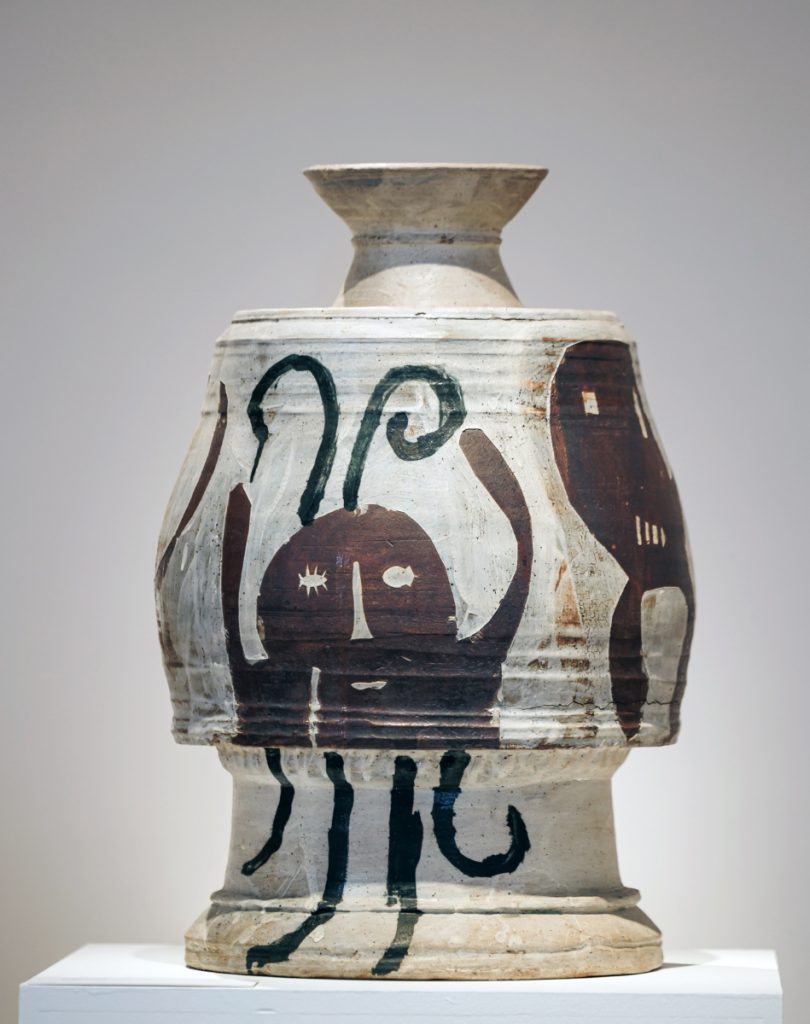
When making an art purchase Forrest also acquires archival material, photographs, and related objects to provide context. Understanding an artist, their era, and their work in depth is a hallmark of his collection. For example, in addition to the many hand-built tiles, vessels, and bowls purchased from Marguerite Wildenhain, he also acquired her potter’s wheel, studio furniture, and ephemera from Pond Farm, her Guerneville, California, school and studio. When funk art sculptor David Gilhooly honored Beatrice Wood on her birthday with a brown glazed ceramic cake, referencing Wood’s legendary affection for young men and chocolate, she cleverly replied in a letter now in Merrill’s collection: “When I entered my room and saw a delicious chocolate cake, I rushed for a knife to cut a piece. How could you play such a miserable trick on me?” The narratives Merrill preserves, combined with his practice of collecting works in great depth by artists such as Laura Andreson, Otto and Vivika Heino, James Lovera, Gertrud and Otto Natzler, and Toshiko Takaezu distinguishes him as a knowledgeable, inquisitive, and resourceful collector. Susi Singer, who was featured in the second Scripps College Ceramics Annual, and Betty Davenport Ford, who was a Scripps student, are both represented in the collection by impressively large works. They illustrate Merrill’s Southern California origins and his admiration for Scripps College and the ceramic annual. Though unassuming in his demeanor, Merrill’s expertise in the ceramics field is vast.
Sculptures by artists like Robert Arneson, Ralph Bacerra, and Henry Takemoto, speak to Merrill’s lifetime of collecting while also providing an enticing view into mid-twentieth-century ceramics with twenty-first-century additions. Several signature pieces by Peter Voulkos reveal his keen sense of connoisseurship. Through his collection, we experience the trajectory of postwar ceramics in California and the United States. Echoing Ede’s idea of adventure, Merrill has enjoyed this process, saying, “The associations that I have been able to form with the people who make these objects are very valuable to me. I feel fortunate that I have had the opportunity to give these things I love a public life through exhibition[s]. But it’s the friendships that have really come back to bless me and enrich my life. And to me, that is where the value really is.”20
More than Clay
The Fred Marer and Forrest L. Merrill collections are lively holdings guided by personal tastes and not defined by trends. They share a commonality of many artists, including Andreson, McIntosh, Soldner, Takemoto, Voulkos, and Wood, while developing their unique interests influenced by region, such as Michael and Magdalena Frimkess in Southern California and Ruth Rippon and Kenneth Dierck in the Northern California. Together, the artists represented in both collections are guideposts to understanding the broader impact of contemporary ceramics, whether created in a college setting or a private studio. “Objects can have the power beyond their immediate concern,” ceramics curator Peter Held expressed, “becoming iconic when they embody and represent multiple levels of meaning.”21 Much of the artwork in Marer’s and Merrill’s collections are iconic pieces that remain accessible due to the openness of each collector who chose to not covet their holdings privately. Instead, they shared their objects through collection study or loan exhibitions. The Marer Collection of Contemporary Ceramics at Scripps College is a mecca for artists, historians, and students to directly engage with ceramic works that spawned a historic shift in clay practice. Merrill loans his collection widely through well curated shows appearing in large and small venues across the country, often with proximity to schools as an important precedent.
Nancy M. Servis, Sacramento, California, is a recognized author, curator, educator, and ceramic historian specializing in Northern California ceramics. She has curated numerous exhibitions related to contemporary and historical ceramics, and taught the groundbreaking course, A Century of Northern California Ceramics at the California College of the Arts (Oakland) for seven years. Her writing is featured in periodicals like Ceramics: Art + Perception, Neue Keramik, Studio Potter, Craft Quarterly and the NCECA Journal. She is presently completing her book detailing 100 years of Northern California ceramic history.
The 80th Scripps College Ceramic Annual, In the Hands of the Collector: The Fred Marer and Forrest L. Merrill Collections, was on view at Ruth Chandler Williamson Gallery in Claremont, California, between February 1 and April 6, 2025.
Subscribe to Ceramics Now to read similar articles, essays, reviews and critical reflections on contemporary ceramics. Subscriptions help us feature a wider range of voices, perspectives, and expertise in the ceramics community.
Captions
- Ryoji Koie (1938–2020), Yo (Fusing), 1969, Raku-fired clay, Scripps College, Claremont, CA, Gift of Mr. and Mrs. Fred Marer
- Laura Andreson (1902–1999), Vessel, 1978, Stoneware and matt glaze, Collection of Forrest L. Merrill
- Liza Riddle (b. 1953), Tracing Time, #507, 2017, Earthenware, Collection of Forrest L. Merrill
- Toshiko Takaezu (1922–2011), Closed Form, n.d., Stoneware, Collection of Forrest L. Merrill
- Gertrud Natzler (1908–1971) and Otto Natzler (1908–2007), Bottle, 1966, Earthenware, reduction fired, Collection of Forrest L. Merrill
- Robert Arneson (1930–1992), Untitled, 1961, Earthenware, Collection of Forrest L. Merrill
- Ralph Bacerra (1938–2008), Untitled, n.d., Stoneware, Collection of Forrest L. Merrill
- Beatrice Wood (1893–1998), Bowl, c. 1980s, Earthenware and luster glaze, Collection of Forrest L. Merrill
- James Lovera (1920–2015), Crater-glazed bowl, 1976, Porcelain, Collection of Forrest L. Merrill
- Marilyn Levine (b. 1935), F. M. Case, 1981, Glazed stoneware, Scripps College, Claremont, CA, Gift of Mr. and Mrs. Fred Marer
- Henry Takemoto (1930–2015), Flag, 1960, Stoneware, glazed, Scripps College, Claremont, CA, Gift of Mr. and Mrs. Fred Marer
- Peter Voulkos (1924–2002), Covered Jar, 1956, Stoneware, glazed, Scripps College, Claremont, CA, Gift of Mr. and Mrs. Fred Marer
Footnotes
- Jim Ede, in Laura Freeman, Ways of Life: Jim Ede and the Kettle’s Yard Artists (London: Jonathan Cape, 2023), 240.
- Edmund de Waal, “Edmund de Waal: Enjoying Reading in the House, Surrounded by Artworks, Early 1980s,” SoundCloud, undated audio recording, 1:11, kettlesyard.cam.ac.uk/bio/edmund-de-waal/.
- Ede, A Way of Life: Kettle’s Yard (Cambridge, England: Kettle’s Yard, University of Cambridge, 2023), 17.
- Peter Held, “A Dense Forest Now Stands: The Importance of the Scripps Ceramic Annual,” in 2014 Scripps College 70th Ceramic Annual, exh. cat (Claremont, California: Ruth Chandler Williamson Gallery, Scripps College, 2013), 18.
- Mary Davis MacNaughton, Art at Scripps: The Early Years, exh. cat (Claremont, California: Lang Art Gallery, Scripps College, 1988), 16.
- Ibid., 36. Ruth Chandler Williamson Gallery Registration and Collections Manager Kirk Delman has been very helpful in clarifying this early timeline.
- Suzanne Muchnic, “Handmade Art Changes Hands,” Los Angeles Times, 26 January 1993, available at latimes.com/archives/la-xpm-1993-01-26-ca-1960-story.html.
- The Otis group refers to Peter Voulkos and his students when he established the ceramics department at the Los Angeles County Art Institute in 1954. (Otis refers to the institution’s original name, the Otis Art Institute, which it returned to in 1958.) In addition to Voulkos, the Otis group included Billy Al Bengston, Michael Frimkess, John Mason, Mac McClain, Ken Price, Jerry Rothman, Paul Soldner, and Henry Takemoto.
- Paul Soldner, interview by Mija Riedel, “Oral history interview with Paul Soldner, 2003 April 27–28. Archives of American Art, Smithsonian Institution,” available at aaa.si.edu/collections/interviews/oral-history-interview-paul-soldner-12457.
- Fred Marer, quoted in Muchnic, “Handmade Art Changes Hands.”
- There is debate around which of two Laura Andreson pieces was Marer’s first purchase. Some historians say it was a glazed stoneware bowl from 1954, while collection insiders believe it was a stoneware teapot from 1944.
- John Mason, interview by Paul Smith, “Oral history interview with John Mason, 2006 August 28. Archives of American Art, Smithsonian Institution,” available at aaa.si.edu/collections/interviews/oral-history-interview-john-mason-13582.
- Garth Clark, “Shifting Paradigms: A Memoir,” in Shifting Paradigms in Contemporary Ceramics: The Garth Clark and Mark Del Vecchio Collection, ed. Clark and Cindi Strauss, exh. cat. (Houston, Texas; and New Haven, Connecticut: The Museum of Fine Arts Houston and Yale University Press, 2012), 13.
- Jun Kaneko, interview with Mary Drach McInnes, “Oral history interview with Jun Kaneko, 2005 May 23–24. Archives of American Art, Smithsonian Institution,” available at aaa.si.edu/collections/interviews/oral-history-interview-jun-kaneko-12628.
- Marer, “Reminiscences,” in Earth and Fire: The Marer Collection of Contemporary Ceramics, ed. Douglas Humble, exh. cat. (Claremont, California: Montgomery Art Gallery, Pomona College, 1984), 12.
- Deborah Bishop, “Collector with a Cause,” American Craft, June/July 2015, available at craftcouncil.org/magazine/article/collector-cause.
- Mark Goudy, email to the author, 7 August 2024.
- Daniel Calderon, email to the author, 9 August 2024. The SFO Museum, with sites throughout the San Francisco International Airport, is an accredited museum. The other shows Forrest L. Merrill developed for the museum are: Scandinavian Modernism: In Pursuit of Function and Beauty, July–October 2008; Modern Form: Scandinavian Ceramics 1930s–1960s, March–October 2012; Turn, Weave, Fire and Fold: Vessels from the Forrest L. Merrill Collection, January–June 2014; A Potter’s Life: Marguerite Wildenhain at Pond Farm, December 2015–October 2016; California Studio Craft: Featuring Works from the Forrest L. Merrill Collection, June 2019–February 2020; June Schwarcz: Unconventional Enamels, July 2023–May 2024; and Kay Sekimachi: Weaving Traditions, November 2023–July 2024.
- Merrill, quoted in Bishop, “Collector with a Cause.”
- Merrill, interview with the author, Emeryville, California, 27 November 2023.
- Held, “A Dense Forest Now Stands,” 18.


